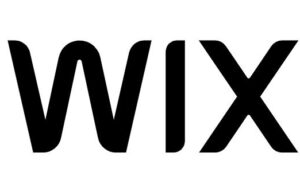Webflow has become one of the most talked-about platforms in modern web design, especially among brands that want visually distinctive online stores.
As consumer expectations rise, merchants want ecommerce websites that load fast, look custom, and deliver a smooth buying experience. Webflow promises unmatched design flexibility combined with built-in CMS tools and essential selling features, which places it in a unique position compared to platforms like Shopify, WooCommerce, or Wix.
This review takes a deep look into Webflow’s ecommerce strengths, weaknesses, performance, SEO capabilities, and ideal use cases.
What Is Webflow Ecommerce?
Webflow began as a visual design platform that allowed designers and marketers to build completely custom websites without coding. As demand grew, the platform expanded into ecommerce, giving users the ability to create product pages, checkout flows, and full storefronts within the same design environment.
Unlike traditional ecommerce builders that use structured templates, Webflow allows users to design every pixel of the store. Its CMS system adds dynamic flexibility, allowing merchants to create product catalogs, collections, blog content, and promotional sections that work together seamlessly.
Webflow Ecommerce works especially well for stores that need creative freedom and content-driven storytelling. Examples include boutique fashion brands, wellness products, digital goods, artisanal products, lifestyle brands, and startups with strong branding needs.
Webflow Ecommerce Features & Capabilities

Webflow offers a balanced foundation of ecommerce features. It doesn’t overwhelm users with complex tools, yet it provides enough functionality for small and medium-sized stores to operate efficiently.
Store Management Tools
Webflow includes essential product management capabilities. Merchants can create products, manage pricing, track inventory, and set up variants such as size, color, or material.
Inventory updates automatically and the dashboard provides clear visibility into product status and stock levels.
The platform also includes built-in cart and checkout components that can be styled to match the rest of the website. While straightforward, the system is reliable for stores with smaller catalog requirements.
Merchants who require advanced inventory forecasting, warehouse integrations, or a high volume of product variations often need external tools, but for most smaller stores the built-in system works well.
Visual Design Flexibility & Customization
Design flexibility is Webflow’s greatest strength. It offers a fully visual builder that mirrors professional front-end development workflows. Users can control spacing, grids, interactions, animations, and every visual detail without touching code.
For ecommerce brands that depend heavily on aesthetics-such as fashion, beauty, and lifestyle-the ability to design unique landing pages, product pages, and promotional sections is a major advantage.
Webflow supports dynamic content, image galleries, custom layouts, and micro-interactions, which help brands craft a polished and memorable customer experience.
Payments, Shipping & Integrations
Webflow supports major payment processors including Stripe, PayPal, and Apple Pay.
Merchants can create shipping regions, rules, and flat or calculated rates based on geography or product type. Taxes can be set manually or automated with tools that integrate through third-party services.
One limitation is the ecosystem. Compared to Shopify, Webflow has fewer dedicated ecommerce apps.
Instead, many merchants rely on Zapier, Make, and API integrations to connect fulfillment tools, automation systems, and marketing platforms. This approach works well for tech-savvy users but may feel limiting for businesses that want plug-and-play ecommerce features.
CMS Power for Content-Driven Ecommerce
Webflow’s CMS is one of its most important advantages. Many ecommerce platforms limit content management or require plugins to scale blog or resource sections. Webflow, by contrast, treats content as a first-class feature.
Merchants can build dynamic collections for blogs, product guides, lookbooks, FAQs, landing pages, and custom resources. Every content type can be connected to products, categories, or promotional elements. This makes Webflow ideal for storytelling and SEO-driven ecommerce strategies.
Performance, Hosting & Scalability
Web performance has a significant impact on conversions and online visibility. Slow pages cause shoppers to abandon carts, and search engines rank faster websites higher.
Webflow is built on fast global hosting architecture powered by AWS and Fastly, which gives stores excellent speed performance without additional plugins or server management.
Most Webflow ecommerce sites load quickly and handle traffic efficiently, especially when the catalog size remains moderate. The platform performs best when merchants avoid oversized images or excessive custom script usage.
Scalability is where Webflow becomes more nuanced. Stores with thousands of SKUs, intricate product structures, or enterprise fulfillment needs often discover limitations.
Catalog size, CMS item limits, and advanced automation workflows are not as flexible as platforms designed for large-scale retail. For small and mid-size businesses, however, scalability is rarely an issue.
Webflow Ecommerce SEO Performance

SEO is one of Webflow’s strongest value propositions. Many merchants choose the platform because it provides granular control over technical and on-page SEO without requiring plugins.
Technical SEO Advantages
Webflow generates clean, lightweight code that search engines can crawl easily.
The platform is fully responsive, uses modern HTML and CSS standards, and delivers fast page speeds on desktop and mobile. These architectural advantages give stores a strong technical foundation that improves ranking potential.
On-Page SEO Features
Merchants can edit meta titles, descriptions, alt text, canonical tags, Open Graph data, and structured templates for CMS items. URL structures are clean and customizable. Redirects are easy to manage and the interface makes it simple to keep content organized.
Because Webflow’s CMS is flexible, merchants can also create SEO-focused landing pages, buying guides, seasonal content hubs, and optimization frameworks that integrate directly with product listings.
SEO Limitations to Consider
Despite its strengths, Webflow still has limitations. Pagination controls are limited, making large category pages harder to structure.
Multi-language SEO requires workarounds or external tools. Advanced schema markup can be added manually, but there’s no automated tool for ecommerce-specific schema types such as product availability, rich variations, or automated review snippets.
Stores with heavy SEO requirements may need a developer to implement structured data consistently.
Webflow Ecommerce Pricing – Is It Worth It?
Choosing an ecommerce platform involves evaluating both features and long-term costs.
Webflow positions itself as a premium visual builder with integrated ecommerce capabilities, and its pricing reflects this combined functionality.
While the design and CMS tools deliver significant value for brands that prioritize aesthetics, the overall cost structure is important to understand before committing to the platform.
Webflow’s ecommerce plans are divided into three tiers. All plans include hosting, SSL, content management, design tools, and access to the ecommerce engine. The primary differences involve transaction fees, product limits, and scaling capacity.
| Plan | Price | Includes |
| Standard | $29/mo | Up to 500 products, 2% Webflow transaction fee, all CMS features, basic ecommerce tools |
| Plus | $74/mo | Up to 1,000 products, 0% Webflow transaction fee, advanced ecommerce tools, increased scaling capacity |
| Advanced | $212/mo | Unlimited products, no Webflow transaction fee, maximum scaling potential for Webflow-based stores |
The platform becomes more cost-effective at higher tiers due to the removal of Webflow’s internal transaction fees. However, all stores still pay Stripe or PayPal processing fees.
Pros and Cons of Using Webflow for Ecommerce

Before evaluating Webflow as an ecommerce solution, it helps to understand how its strengths and limitations balance each other.
Webflow excels in areas related to design, customization, and content management, yet it also has constraints that may affect long-term ecommerce growth.
The table below summarizes the key advantages and disadvantages to help merchants quickly identify whether Webflow aligns with their needs.
| Pros | Cons |
| Full visual design flexibility with pixel-level control | Limited native ecommerce features compared to Shopify |
| Clean, SEO-friendly code and fast hosting | No built-in multi-currency support |
| Powerful CMS for building blogs, guides, and dynamic content | Smaller ecommerce integration ecosystem |
| Beautiful, completely custom storefronts without templates | Less suitable for large catalogs or high-volume stores |
| Smooth, modern user experience for designers and marketers | Requires additional tools for advanced automation and fulfillment |
Who Webflow Ecommerce Is Best For
Webflow shines for brands that view design and content as central parts of their competitive advantage.
Boutique brands, creative studios selling merchandise, handmade product shops, and lifestyle businesses often find Webflow ideal.
Startups that want to launch visually strong landing pages and marketing funnels appreciate the flexibility that Webflow offers.
The CMS also appeals to content-driven ecommerce strategies, where blogs, guides, and editorial sections support customer education and search visibility.
Who Should Avoid Webflow Ecommerce
Some businesses discover that Webflow’s ecommerce limitations outweigh its design advantages. High-volume retailers, large catalogs, subscription-heavy stores, and dropshipping operations usually require more automation than Webflow supports natively.
Brands that need multi-currency selling, multi-location inventory, or enterprise fulfillment workflows often face complications.
In these cases, a more specialized ecommerce platform provides better long-term value.
Final Verdict: Is Webflow Good for Ecommerce Stores?

Webflow is an excellent ecommerce platform for businesses that prioritize creative control, visual storytelling, and content-driven marketing. Its design tools surpass nearly every other ecommerce platform, and the CMS allows merchants to build powerful SEO ecosystems around their products.
However, it is not designed to handle the demands of large, complex, or highly automated ecommerce operations. Stores that expect to scale aggressively or rely on intricate operational workflows will likely find Webflow’s ecommerce limitations restrictive.
In summary, Webflow is one of the strongest choices for small and medium-sized brands that want a beautifully designed, fast-loading, SEO-friendly online store.
Its strengths in design and content make it ideal for modern DTC brands that want a polished, memorable shopping experience. For brands that need deep ecommerce infrastructure, broader automation, or large-scale retail tools, a more specialized ecommerce platform may be a better fit.









